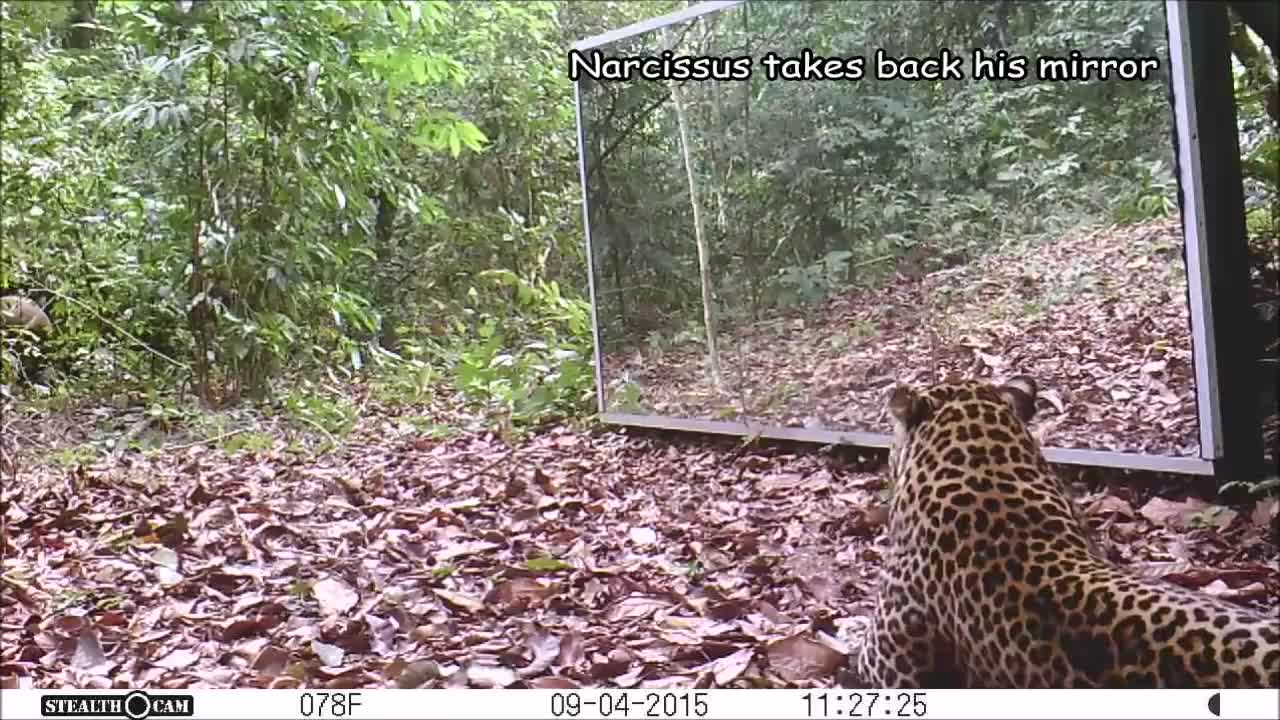Premium Only Content

Gabon' Jungle: An Elephants Family Refuses To Share A Big Mirror With A Leopard (Short Version)
Gabon' Jungle: An Elephants Family Refuses To Share A Big Mirror With A Leopard (Short Version). 𝗧𝗵𝗶𝘀 𝗶𝘀 𝗾𝘂𝗶𝘁𝗲 𝗻𝗮𝘁𝘂𝗿𝗮𝗹 𝗮𝘀 𝘁𝗵𝗲 𝗺𝗮𝘁𝗿𝗶𝗮𝗿𝗰𝗵 𝗮𝗻𝗱 𝗵𝗲𝗿 𝗼𝗹𝗱𝗲𝗿 𝗰𝗵𝗶𝗹𝗱𝗿𝗲𝗻 𝗵𝗮𝘃𝗲 𝘁𝗼 𝗽𝗿𝗼𝘁𝗲𝗰𝘁 𝘁𝗵𝗲 𝗵𝗲𝗿𝗱'𝘀 𝗯𝗮𝗯𝗶𝗲𝘀 𝗳𝗿𝗼𝗺 𝗮 𝗹𝗲𝗼𝗽𝗮𝗿𝗱, 𝘁𝗵𝗲𝗶𝗿 𝗺𝗮𝗶𝗻 𝗽𝗿𝗲𝗱𝗮𝘁𝗼𝗿 𝗮𝗳𝘁𝗲𝗿 𝗽𝗼𝗮𝗰𝗵𝗲𝗿𝘀.
𝗔𝘁𝘁𝗮𝗰𝗸 𝗶𝘀 𝘁𝗵𝗲 𝗯𝗲𝘀𝘁 𝗱𝗲𝗳𝗲𝗻𝗰𝗲! 𝗣𝗿𝗲𝘃𝗲𝗻𝘁𝗶𝗼𝗻 𝗶𝘀 𝗯𝗲𝘁𝘁𝗲𝗿 𝘁𝗵𝗮𝗻 𝗰𝘂𝗿𝗲!
In a remote area of the Gabonese forest, 12 km from the equator and 10 km from the Atlantic Ocean, outside a national park, Anne-Marie et Xavier Hubert-Brierre have been observing the reaction of wild animals as they catch sight of themselves in large mirrors (250cm x 120cm) with motion sensors camera traps the couple installed 9 years ago. This innovative idea attracted the attention of primatologists, behaviour specialists whose studies on self recognition have, until now, been carried out in laboratories, on wild animals in captivity who are accustomed to the presence of humans. Wild animals come and go as they please in front of our mirrors and stay as they like both day and night.
For humans self recognition is not immediate: in the case of the very young child a period of “mirror training” guided by the reassurance of the mother is necessary.
For wild animals who haven't had this mirror training, nor possess the use of language to guide and reassure their child, self recognition is much more difficult.
Let's take the example of a gorillas family: Adult males see their reflection as a stranger come to seize his females. Young animals, on the other hand, see their reflection as a friend and companion. They don't hesitate to touch the surface of the mirror or reach behind the mirror in an effort to touch the image. Rebekah, a young student of Professor Jim Anderson, of the University of Sterling in Scotland, concluded her researched, based on our videos of a young male gorilla in front of our mirrors by stating, “this gorilla has demonstrated the ability to recognise himself.” Translated by Robin Alcorn
-
 2:13:19
2:13:19
Badlands Media
21 hours agoDevolution Power Hour Ep. 371: RICO Dreams and Epstein Schemes
84.2K53 -
 18:25
18:25
DeVory Darkins
1 day ago $42.90 earnedShocking Update regarding Pam Bondi's resignation... DOJ explosive clash with FBI exposed
53.5K344 -
 19:38
19:38
Stephen Gardner
11 hours ago🔥It JUST got SO MUCH WORSE for Elon Musk!
63K128 -
 2:54:52
2:54:52
DLDAfterDark
6 hours ago $7.30 earnedIf SHTF What Are You Taking With You? What's The Best AR15? After Hours Armory!
34.3K4 -
 55:06
55:06
MattMorseTV
14 hours ago $47.89 earned🔴Pam Bondi is getting SET UP ??🔴
137K236 -
 2:54:52
2:54:52
BlackDiamondGunsandGear
19 hours agoTIME IS NOW, What are You Taking? EDC
24.1K3 -
 8:54:32
8:54:32
Turning Point USA
17 hours agoSAS IS LIVE! Brett Cooper, Tulsi Gabbard, Greg Gutfeld, Russell Brand and more... in Tampa, FL!
1.46M142 -
 2:29:31
2:29:31
Mally_Mouse
12 hours agoSpicy BITE Saturday!! - Let's Play!
51.4K3 -
 11:52
11:52
Exploring With Nug
18 hours ago $10.59 earnedUnderwater Search for Missing Person Finds Sunken ATV in Lake!
72.7K3 -
 50:54
50:54
Russell Brand
13 hours agoLIVE at Student Action Summit - Let’s Talk Power, People, and Possibility!
161K38